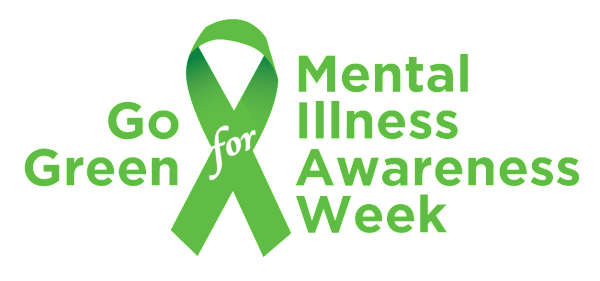Almost 25 years ago, U.S. Congress officially recognized the first full week of October as Mental Illness Awareness Week (MIAW) in an attempt to raise mental illness awareness. The National Alliance on Mental Illness (NAMI) was, and continues to be, a primary force in garnering national and legislative attention for mental health issues. Professionals and advocates across the country unite together this week to promote public education about mental health.
Every year, over 60 million Americans experience living with a mental illness. The significance of bringing awareness to the public about mental health and its care becomes increasingly crucial. Mental health conditions remain misunderstood and stigmatized by a majority of the population, leaving people with mental illnesses feeling alone and hopeless. Mental health organizations, professionals, and advocates continue to fight for equal care and the development of better resources for those seeking help.
Mental Illness Awareness Week provides an opportunity for all of us – professionals, advocates, individuals with mental health conditions, friends, and family – to unite, educate ourselves and others, fight stigma, and enhance the quality of life for millions of people.
Use your voice. Share your story with others or submit one via our Telling Our Stories section, where people with mental health conditions and others come to find support and understanding. Donate your time to worthy causes for mental health. Be an advocate.
To highlight the significance of Mental Illness Awareness Week, here are some statistics gathered by NAMI about Mental Health in the United States.
Mental Illness in America: The Numbers
- 1 in 4 adults (61.5 million Americans) experiences mental illness each year. 1 in 17 (13.6 million) lives with a serious mental illness such as schizophrenia, major depression, or bipolar disorder.
- 20% of teens ages 13-18 experience severe mental disorders in a given year. For adolescents ages 8-15, the estimate is 13%.
- 1.1% (2.4 million) of American adults live with schizophrenia.
- 2.6% (6.1 million) of American adults live with bipolar disorder.
- Almost 7% (15 million) of American adults live with major depression.
- 18% (42 million) of American adults live with anxiety disorders, such as panic disorder, obsessive-compulsive disorder (OCD), posttraumatic stress disorder (PTSD), generalized anxiety disorder, and phobias.
- 9.2 million adults have co-occurring mental health and addiction disorders.
- 26% of homeless adults staying in shelters live with severe mental illness and 46% live with severe mental illness and/or substance use disorders.
- 20% of state prisoners and 21% of local jail prisoners have “a recent history” of a mental health condition.
- 70% of youth in juvenile justice systems have at least one mental health condition and at least 20% live with a severe mental illness.
Mental Health Treatment in America: Getting Help
- 60% of adults and almost half of youth ages 8-15 with a mental illness received no mental health services in the previous year.
- African Americans and Hispanic Americans used mental health services at about half the rate of whites in the past year and Asian Americans at about a third of the rate.
- 50% of all chronic mental health issues begin by the age of 14; 75% begin by the age of 24. Despite effective treatment, there are long delays – sometimes decades – between the first appearance of symptoms and when people seek help.
Mental Health in America: The Impact
- $193.2 billion dollars accounts for lost earnings each year from serious mental health conditions in America.
- Mood disorders such as depression are the third most common cause of hospitalization in the U.S. for both youth and adults ages 18-44.
- People with serious mental illness are more likely to develop chronic medical conditions. Adults living with serious mental illness die on average 25 years earlier than other Americans, mainly because of treatable medical conditions.
- Over 50% of students with a mental health condition age 14 and older who are served by special education drop out – the highest dropout rate of any disability group.
- Suicide is the 10th leading cause of death in the U.S. (more common than homicide) and the third leading cause of death for ages 15-24 years. More than 90 percent of those who die by suicide had one or more mental disorders.
- Although military members comprise less than 1 percent of the U.S. population, veterans represent 20 percent of suicides nationally. Each day, about 22 veterans die from suicide.
